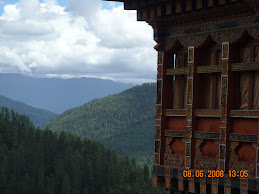Adidas cap is trendy and comfortable. I liked a wallet the moment I saw it. Prospirit digital watch has all the function I need. I bought them all and few others while shopping in Australia. Awesome.
Each of the above purchase and many more, I may or may not mention in the later part of this blog, I discovered one thing in common. None of the products were made in Australia. I know the answer is off shoring, cutting down cost, and many more pleasant and unpleasant things about globalisation.
My Adidas cap is made in Bangladesh, another read China, and the purse was made in India. I paid awesomely huge price in Ngultrum (Which is at par with Indian Rupees) for each of these products. Having read the book by Thomas L Friedman, his book enlightened me, the world is flat now. These products are designed here, assembled in the low cost countries and brought here to fetch higher prices.
But why have they not supplied these products to market like Bhutan? If the cap was made in Bangladesh, why did they send rejected ones to Bhutan and good ones to Australia?
The obvious answer is purchasing power, which Bhutanese consumers haven't attained. Over the period of time, consumers from the third world might loose the brand image. The Adidas cap made in the developed world would not appeal us any longer. By the time the third world consumers acquire the ability to purchase, they may not have the taste for it.
I know that India produces quality leather goods. They are made in Kolkatta, Banglore and many other cities. I have used them and other produce of India. Next thing was I wanted foreign goods. Foreign goods meant products from Australia, Europe and America, not India, China or Bangladesh. I took pride to own them. I still do. May be not- for long.
Where is the western world with outsourcing, off shoring and Foreign Direct Investment? Don't you think that Western worlds are loosing the image that they worked hard for such a long time? May be or may be not. I think it depends on what we want, the brand or the purpose that commodity meant to serve.
OR may be the answer lies in teaching of Buddhism- Always in hurry to get nowhere.
It is truly a blessing for consumer from the third world. One day, I might think of asking my Bangladehsi friend to send me a cap meant for Australian. And also remind him he can't charge the price that he charges his Australian consumer. We are closer, you know. Or I might not ask at all and settle with what is "made in China".
Susan who lives in Fremantle, suburban town in Perth, says she can't trust anything Chinese. I never did either. God help us both. They are striving hard to be the producer of the world. Chinese are very ambitious and hard working people- that would also be the dictionary meaning of Chinese in the new list of words in the near future.
Bhutan is yet to have free trade with China, but their products were in the market for a long time. There is one dedicated shop in front of the Post office in Thimphu for Chinese imported goods. When the glass is over filled, there are spills. We use to get the spills in the past. It was messy, then. Now the Chinese goods are taking shapes. Once in a while, I buy Chinese toys for my daughters, may be all the time. I concluded from the news coverage in Europe in 2007, when Chinese products failed to meet standard, Chinese toys were all over the world.
It was also obvious that China adopted a very good marketing strategy for the long run. They are making the future generation of the world to get friendly with the Chinese products at the early stage of life by making and supplying toys.
Have you ever wondered why we can't live without Emadatshi? The answer is simple- we grew up eating them everyday. We miss them after few weeks away from home. We miss the burning sensation of hot chillies on our lips and mouth even at more than forty degree Australian heat. Chinese marketing strategy is as simple as that.
My daughter is growing up eating Emadatshi and she is also playing with the toys from China. She will develop the trust after sleeping with Chinese Barbie dolls and teddy bear in her bedroom. Do I have to worry about that? I don't know.
But my daughter may not never look for an Adidas cap made in the USA, Australia or UK. I guess It might come true.



